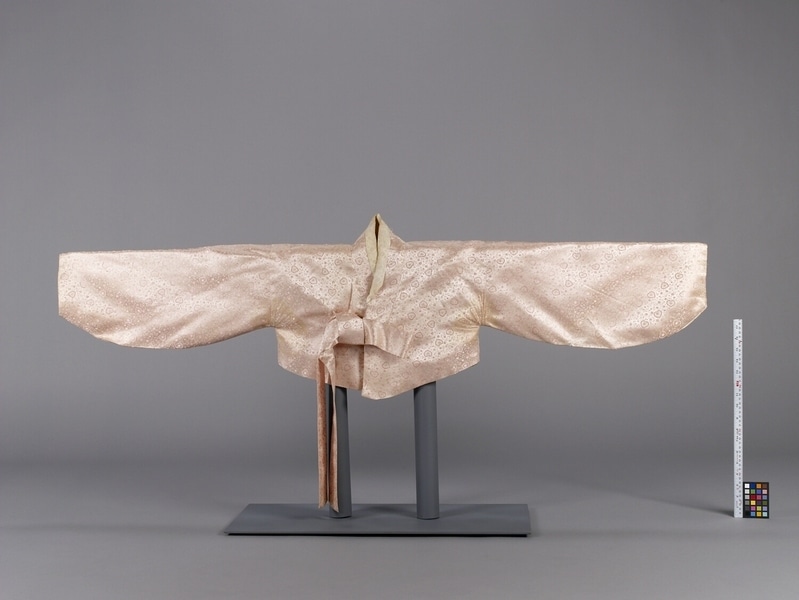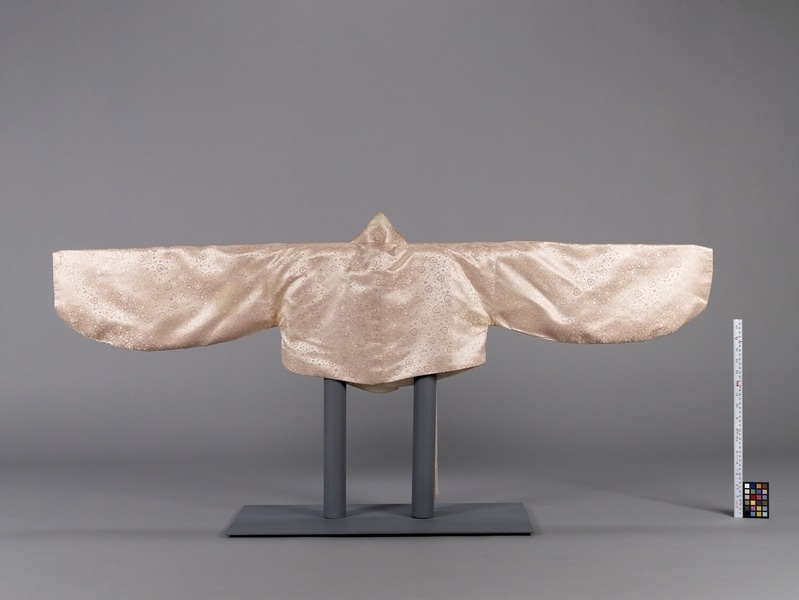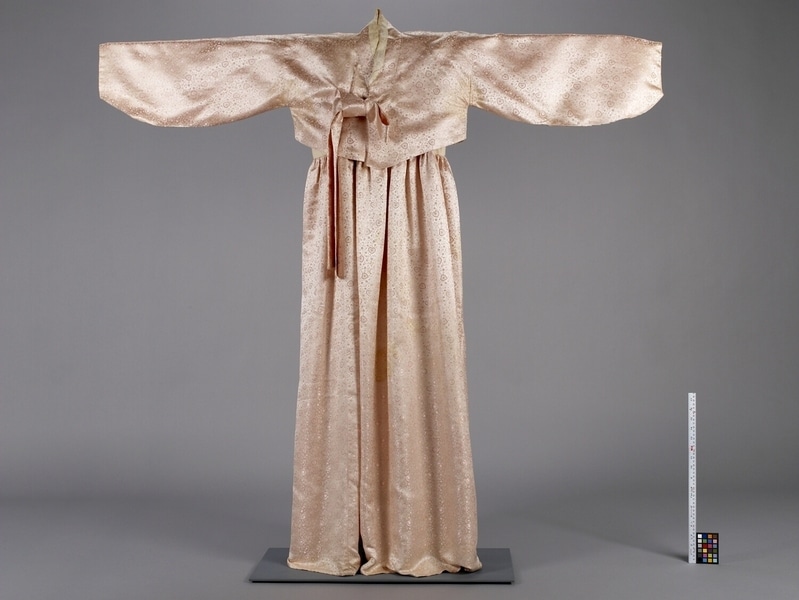Jacket Item Number: Ed1.319 from the MOA: University of British Columbia




Description
Pink jacket with heart and floral pattern. The centre opening has front panels that overlap to the right when closed. The jacket has a deep V-neck edged with an outer facing. The neck is finished with a narrow facing or collar of white silk. Two long thick ties are attached to the lower left facing and to the right of the facing. Thin white inner ties are sewn to the inner right inner facing and the left underarm seam. The long sleeves are set in with a straight seam and a convex curve on the lower edge, narrowing to the wrist. The inner lining is off-white rayon with a small square pattern.
History Of Use
Such “Jo-go-ri”, made of extravagant fabrics were favoured in the postwar period, to be worn as formal wear. Heavy, shiny rayon called “Yang-dan” was very popular and famous at that time. During the 1950s the underarm seams were longer than those worn both previously and later, and the garment as a whole was wider, making it more comfortable. Formal wear, however, retained the shorter underarm seams and shorter length. The curve at the lower edge of the sleeve was deeply rounded at this time. Graceful curves, like those at the lower edge of this garment, are important in Korean aesthetics and reflected in various forms, including architecture.
Specific Techniques
The garment is machine sewn except for the stitches attaching the white collar, which are done by hand.
Iconographic Meaning
peaches are symbols of longevity.
Narrative
Worn by Norma Elrod while living in Korea. This jacket would be worn with skirts Ed1.318 or Ed1.320. Most of the clothing in the J. McRee Elrod Collection was made for him and his family by friends while they were living in Korea, much of it by Kim, Sung Sook. She and her family lived cooperatively in the same house as the Elrod family. While they were there, the Elrods preferred to wear Korean clothing on very cold days and for social occasions. They found it to be more comfortable than western clothing in cold weather, as public buildings were unheated in the period immediately following the Korean War. It also was more comfortable for floor seating in Korean homes, and easier to store with limited furniture than western clothing.
Item History
- Made by Sung Sook Kim (Maker) in Seoul, Korea between 1955 and 1960
- Collected between 1955 and 1960
- Owned by Norma Elrod
- Owned by J. McRee Elrod before October 13, 1976
- Received from J. McRee Elrod (Donor) on October 13, 1976
What
Who
- Culture
- Korean
- Creator
- Sung Sook Kim (Maker)
- Previous Owner
- Norma Elrod and J. McRee Elrod
- Received from
- J. McRee Elrod (Donor)
Where
- Holding Institution
- MOA: University of British Columbia
- Made in
- Seoul, Korea
When
- Creation Date
- between 1955 and 1960
- Collection Date
- between 1955 and 1960
- Ownership Date
- before October 13, 1976
- Acquisition Date
- on October 13, 1976
Other
- Item Classes
- textiles
- Condition
- good
- Accession Number
- 0335/0005 a